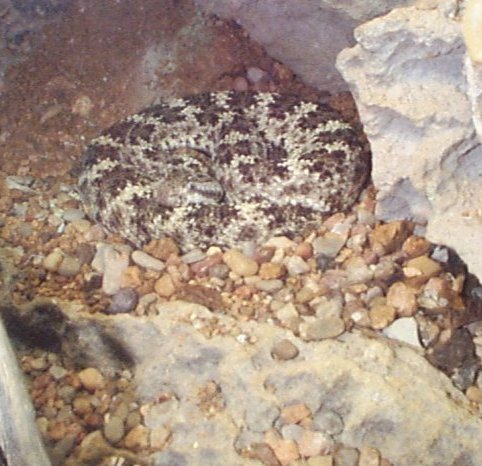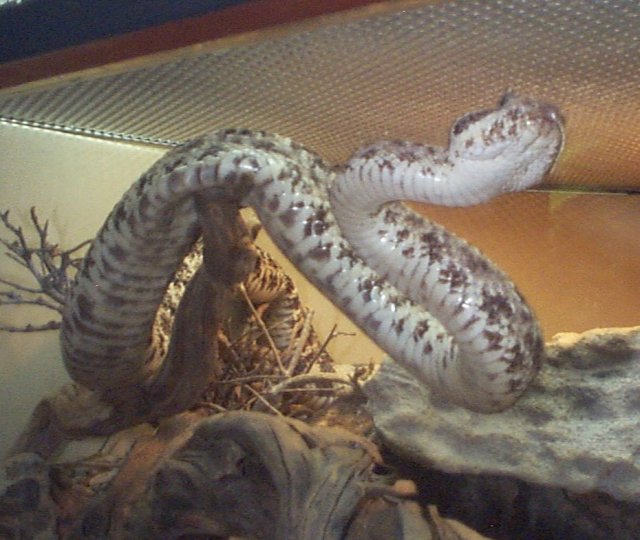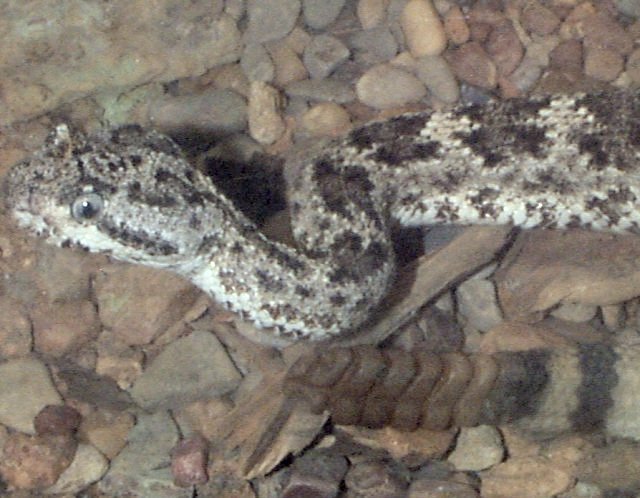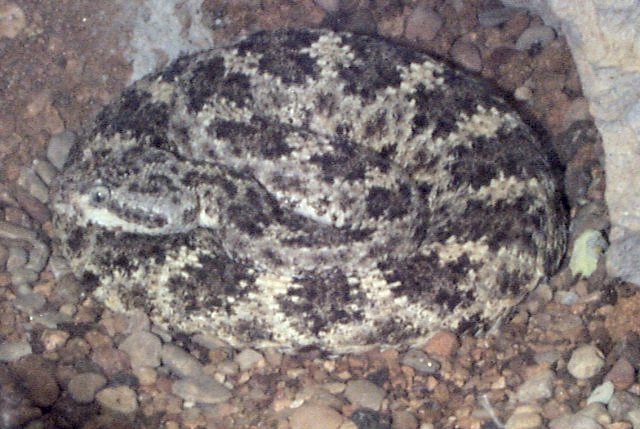Special anatomical, physiological
or behavioral adaptations:
The poisonous apparatus of the rattlesnake
consists of two glands, one in each cheek, connected by ducts to the base
of two long, hollow teeth in the front of the upper jaw. The jaw is constructed
so that the fangs may be erected for striking or folded back into the mouth
when not in use. The venom contains at least two poisonous substances,
both protein in nature. One is a powerful depressant of heart and lung
action; the other is a tissue-disintegrating agent.
|
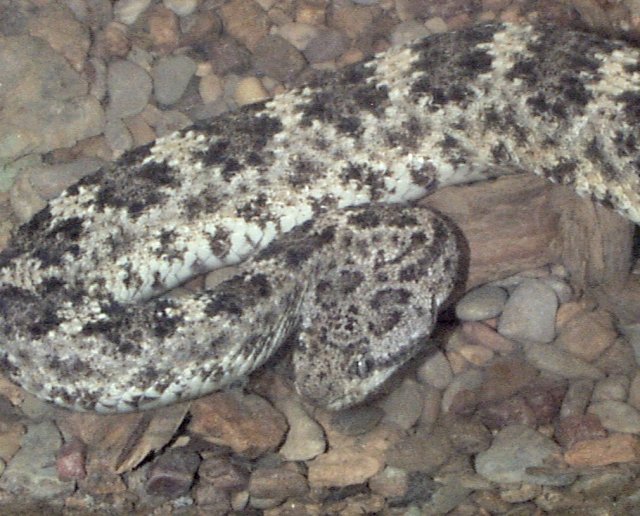 |
